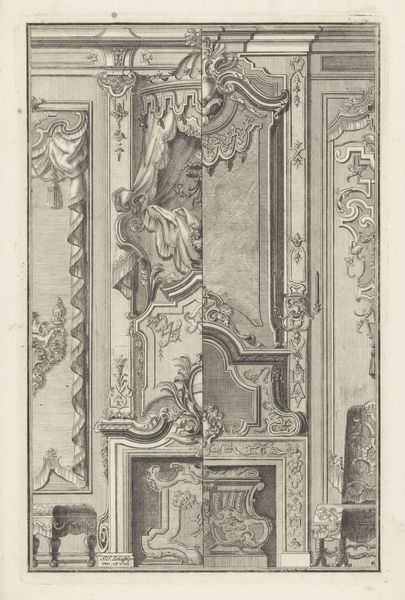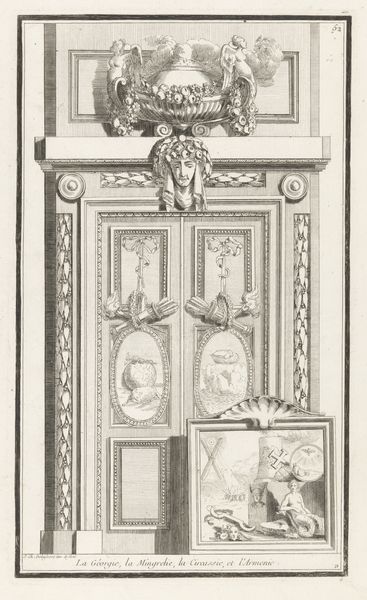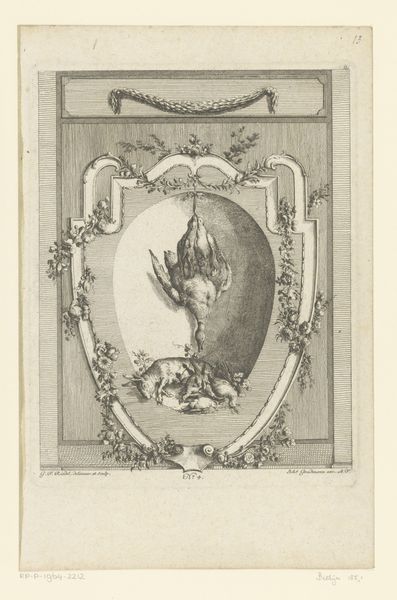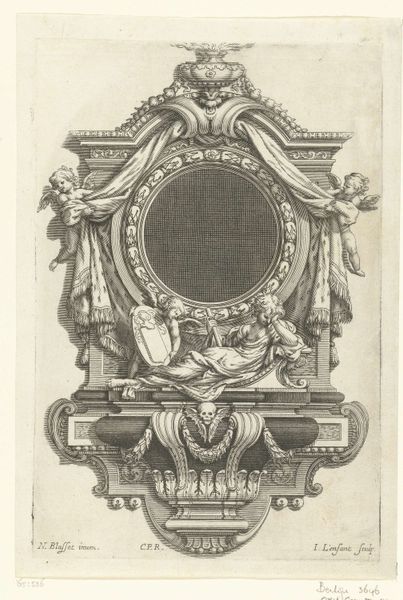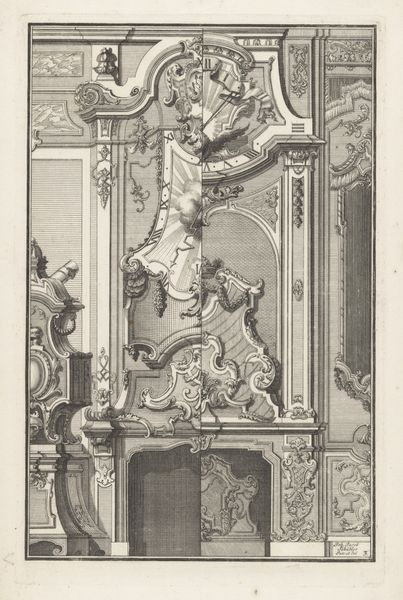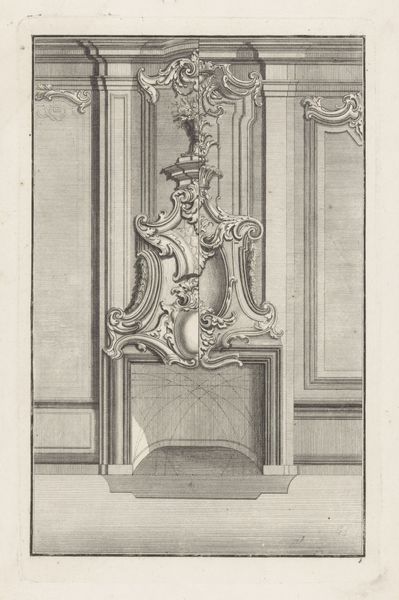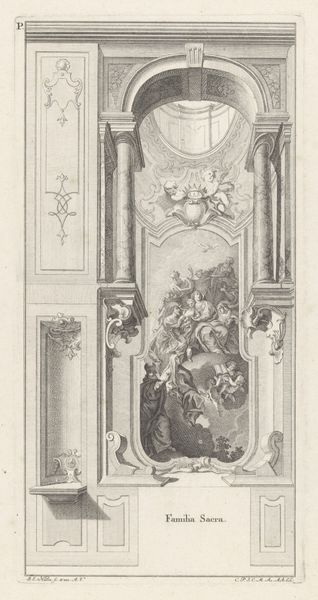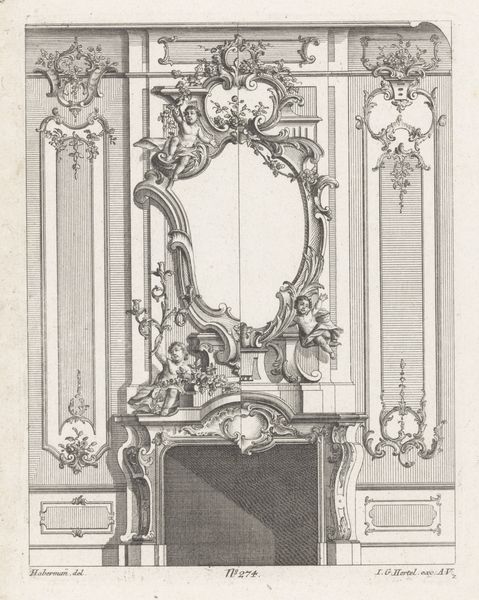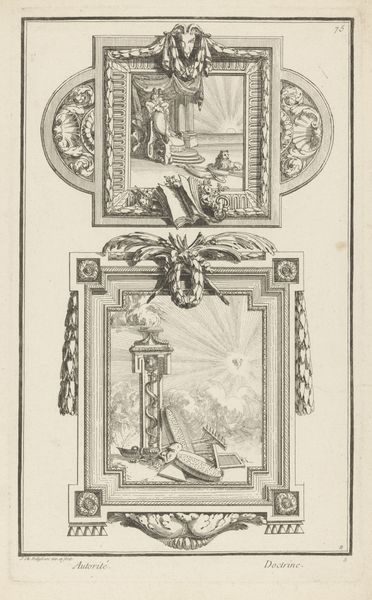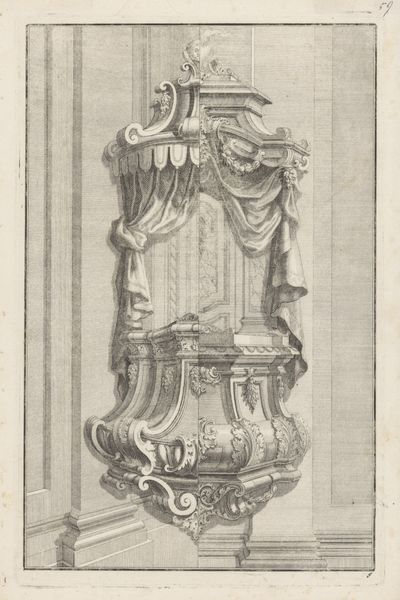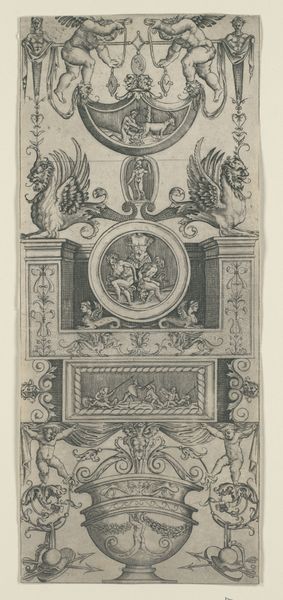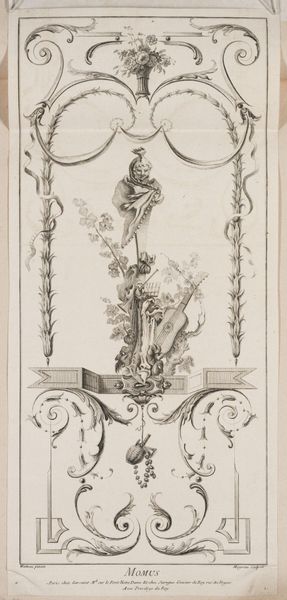
drawing, graphic-art, print, etching, engraving
#
drawing
#
graphic-art
#
neoclacissism
# print
#
etching
#
old engraving style
#
form
#
line
#
history-painting
#
engraving
#
realism
Dimensions: height 376 mm, width 226 mm
Copyright: Rijks Museum: Open Domain
Curator: Let’s consider this engraving, "Moskovië (Rusland)," created by Jean Charles Delafosse between 1768 and 1771. It resides here at the Rijksmuseum, a fantastic specimen of neoclassicism in graphic form. What’s your immediate response to it? Editor: It feels very... stagey. Like a meticulously arranged tableau, complete with drapes and a classical architectural frame. A proscenium for power, maybe? Curator: Delafosse was very invested in the means of creating luxury items— textiles, ornaments and architecture. The elaborate framing is significant, elevating the somewhat chaotic still life within. Do you see how the carefully etched lines create the illusion of expensive drapery? The print medium allowed for relatively wide distribution, and made luxury, or an idea of it, available to a wider audience. Editor: I see the symbols, certainly. We’ve got representations of wealth and plenty– livestock and game birds—a book perhaps indicating wisdom or law. The strange disc reminds me of looking at a coat-of-arms, something hinting at identity. Are these generic symbols of Russia, or something more specific to Moscow? Curator: It is Moscow personified through its abundance and resources. Think of how these representations speak to an idealized vision constructed for external consumption, potentially masking socio-political realities within the region itself. What meaning might the sword represent when juxtaposed against the symbols of wealth? Editor: The sword would signify military might, protection of resources. It does add a layer of implied threat. But there's such an attention to decorative detail here; I think the composition itself, and how these elements come together, speaks of attempts at consolidating political authority, projecting a narrative of wealth. Curator: Exactly! And the context of printmaking itself - etching, engraving - all are critical to consider here. Think of the workshops, the dissemination... it all speaks to a certain ambition, doesn’t it? To circulate not just an image but also a crafted idea of Russia. Editor: So it is less about a true picture, and more about presenting the image desired? An idea carefully fabricated through a combination of image and production? Curator: Precisely! Editor: It certainly gives me pause to think about the crafting of an image in print as more than just artistry, and what stories images tell about those who control their production and circulation. Curator: Indeed, this image as a vehicle to a broader message.
Comments
No comments
Be the first to comment and join the conversation on the ultimate creative platform.
